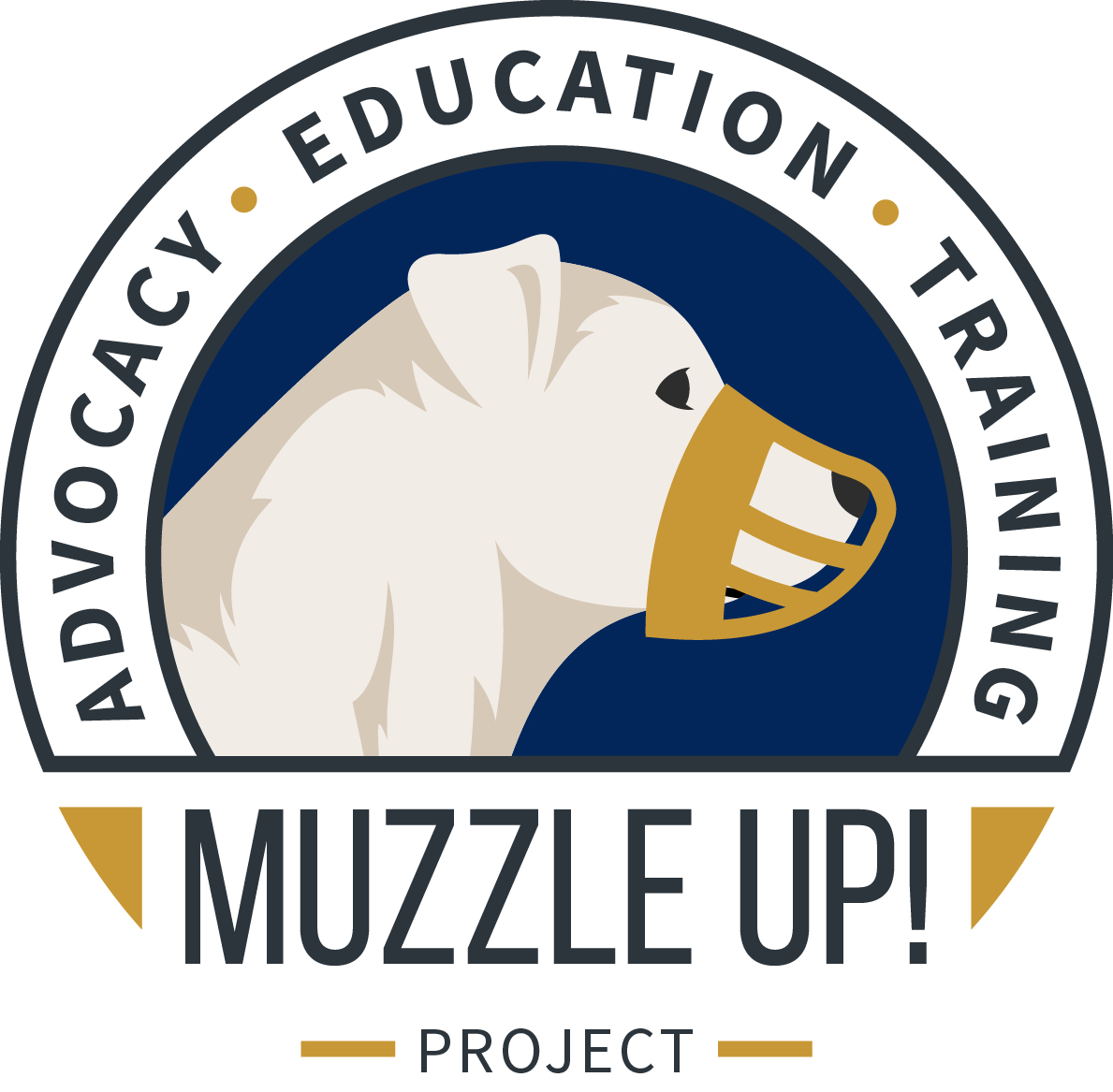“Act before the animal suffers.” – RSPCA Animal Welfare Act 2006
I credit Chirag Patel with bringing my attention to these words. I remember being struck at their poignancy when I first heard them. They make sense. They provide a needed paradigm for the dog training industry. They also serve as a foundation for my work.
People often ask me why I started The Muzzle Up! Project. It wasn’t until I heard the phrase “act before the animal suffers,” just five words that hold such power, that I was able to answer this question succinctly.
Muzzle Up has three goals: Advocacy, education, and training. Each of these goals strives to help guardians and pet professionals be less reactive and more responsive when working with dogs. It’s easy to react once a situation has occurred. A dog bites, and then we muzzle train. While this approach is certainly better than not muzzle training at all, a responsive approach allows us to advocate, educate and train before an incident occurs. In other words, acting before animals suffer.
The following scenarios illustrate a less reactive, more responsive approach to muzzle training:
Aggression
“If he bites, I’ll muzzle train him.” All dogs have the ability to bite. Most dogs display various warning signals prior to biting. But why wait for a bite to occur? When done properly, muzzle training will not add additional stress to a dog or interfere with an aggressive dog’s training plan. On the contrary, it ensures dogs and humans stay safe in the event of management failure. It also protects the aggressive dog from developing a bite history, which carries ramifications that can severely limit quality of life.
“If he bites again, I’ll muzzle train him.” If a dog has already bitten another dog or human, muzzle training should be the first priority. Muzzle training does not take the place of thorough desensitization and counterconditioning protocols, as well as pharmacological intervention, to help reduce a biting dogs’ fear and aggression, but it does prevent unnecessary suffering. If a child riding a bike falls and hits his head, most parents wouldn’t wait for the child to fall and hit his head again before requiring him to wear a helmet. Better yet, the parents would require the child to wear a helmet from day one. Acting before he suffers. We owe dogs the same type of responsive care.
Puppies
“My dog is a puppy. Why would he need a muzzle?” Puppy training is all about socialization, preventing future behavior problems by giving the puppy positive, safe experiences with as many different people, dogs and stimuli as possible. Often, muzzle training is left out of the socialization mix. While puppies don’t need muzzles, the socialization window is a prime opportunity to form early, long-lasting positive associations with a muzzle and handling around the face. Most puppy classes now focus on desensitization to nail clippers, brushes, vacuum cleaners, and more. It’s time to add muzzles to the mix.
The veterinarian
“My dog already hates the vet.” Many dogs are afraid of the veterinarian. They need to be taken “to the back” to be restrained and muzzled for various procedures, often adding to that fear. While muzzle training will not erase fear of various veterinary procedures, it’s a critical component to any fear-free vet training program. Training a dog to love his muzzle lowers one stressful component to a vet visit. Instead of having to wear a cloth muzzle, guardians can bring the dog’s usual muzzle – the one loaded with positive associations – with them. Eliminating chances of a bite helps vets and techs can perform a more thorough examination, reduces the need for anesthesia for certain procedures, and also opens the door to do further desensitization and counterconditioning to all types of procedures and restraint.
The “normal” dog
“My dog doesn’t bite. He doesn’t need a muzzle.” Every dog has the ability to bite. The chance of a bite increases manyfold when a dog is in pain or injured. By pre-training a non-aggressive, socialized dog to love wearing a muzzle, guardians can once again act to prevent additional suffering if their dog has an emergency, instead of stacking a new stressor onto an already stressful situation.
